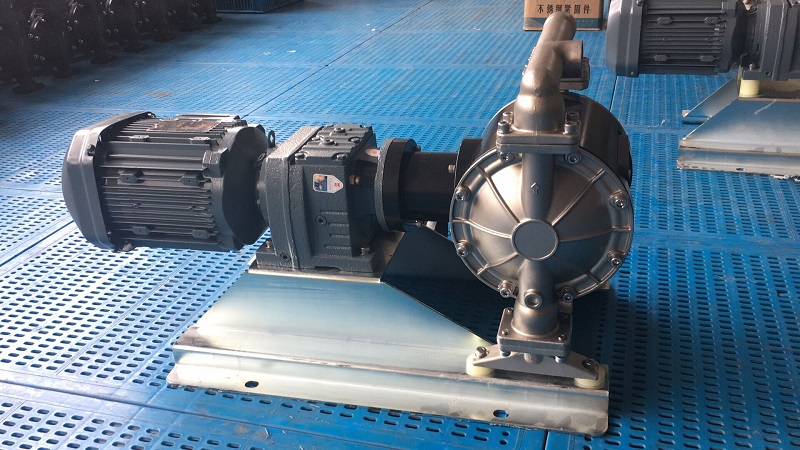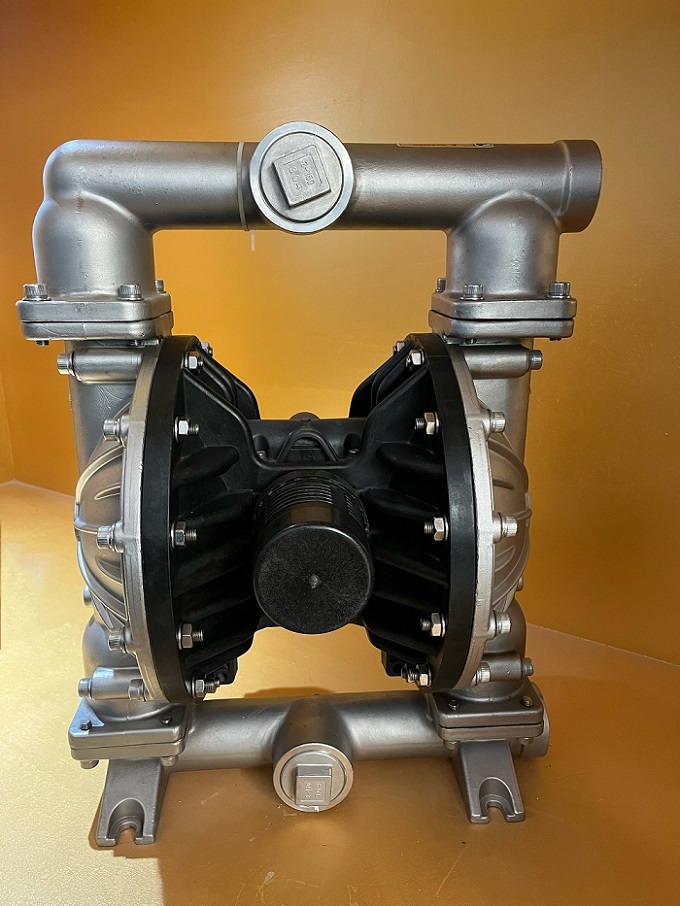Electric diaphragm pumps and pneumatic diaphragm pumps are two common industrial pumps. The following are the differences between them in terms of energy drive, operating principle and applications:
1. Energy drive and operating principle:
Electric diaphragm pump:It is a diaphragm pump that uses electrical energy to drive the pump. It is mainly composed of a series of components such as motor, reducer, clutch, diaphragm pump, and sensor. The electrically driven reducer is a primary component that reduces the speed of the electric motor to a speed that can drive the diaphragm pump. Electric diaphragm pumps are powered by an electric motor, converting energy into mechanical motion to drive the diaphragm to work. Its working principle is based on the reciprocating piston principle, and is connected to the diaphragm through a motor-driven connecting rod to realize the suction and discharge of liquid.
Pneumatic diaphragm pump:It is a pump that use compressed air as a power source . It mainly consists of pneumatic part and mechanical part. The pneumatic part includes pneumatic motors and air pressure amplification devices, and the mechanical part includes components such as diaphragm pump body and connecting rods. The Pneumatic diaphragm pumps convert air energy into mechanical kinetic energy, and push the diaphragm to complete the work. Its working principle is based on the principle of pneumatic piston, which is connected to the diaphragm through the air compression part, and uses the push of air to achieve the suction and discharge of fluid.


2.Applications
Electric diaphragm pump
Electric diaphragm pumps are widely used in fields that require stable flow& pressure, safe and convenient operation, such as chemical industry, pharmaceuticals, electronics, food, paper making, printing and dyeing, etc.
Pneumatic diaphragm pump
Pneumatic diaphragm pumps are mainly used for transportation in special and harsh environments such as flammable and explosive, highly corrosive, high viscosity, high temperature and high pressure. Such as chemical production, dangerous goods transportation, paint spraying, petroleum processing, adhesive transportation, sewage treatment, etc.
3. Different operating methods: Electric diaphragm pumps can adjust flow and pressure by adjusting the frequency converter and flow controller, while pneumatic diaphragm pumps adjust pressure and flow rate through the air inlet and exhaust port.
4. Maintenance costs: The maintenance cost of electric diaphragm pumps is relatively high due to the presence of motors, reducers and other parts, while that of pneumatic diaphragm pumps is relatively low.
5. Noise and vibration: Because the motor directly drives the diaphragm pump, the electric diaphragm pump has greater noise and vibration; while the pneumatic diaphragm pump has less noise and vibration.
6. Flow rate: The electric diaphragm pump is about 0.5-20m3/h, and the head can only reach 30 meters. For a pneumatic diaphragm pump, the flow rate is approximately 0.8 - 63.6m3/h, and its maximum lift can reach 84 meters.
7. Advantages of diaphragm pumps
Electric diaphragm pump
Pneumatic diaphragm pump
Conclusion
when choosing a suitable pump type, you must consider the working environment and needs, and make decisions based on your liquid, your need flow rate and pressure. Plastic diaphragm pump, Aluminum diaphragm pump, stainless steel diaphragm pump, 1/2inch diaphragm pump, 1inch diaphragm pump, 2inch diaphragm pump, 3inch diaphragm pump are available.